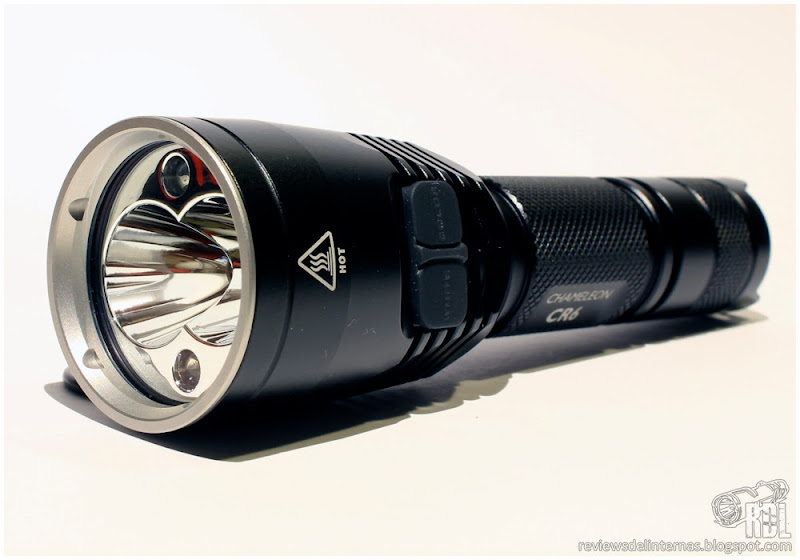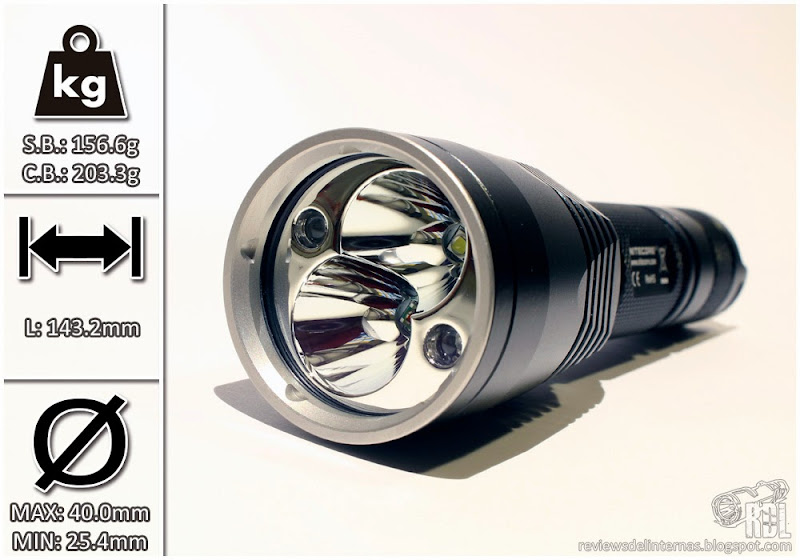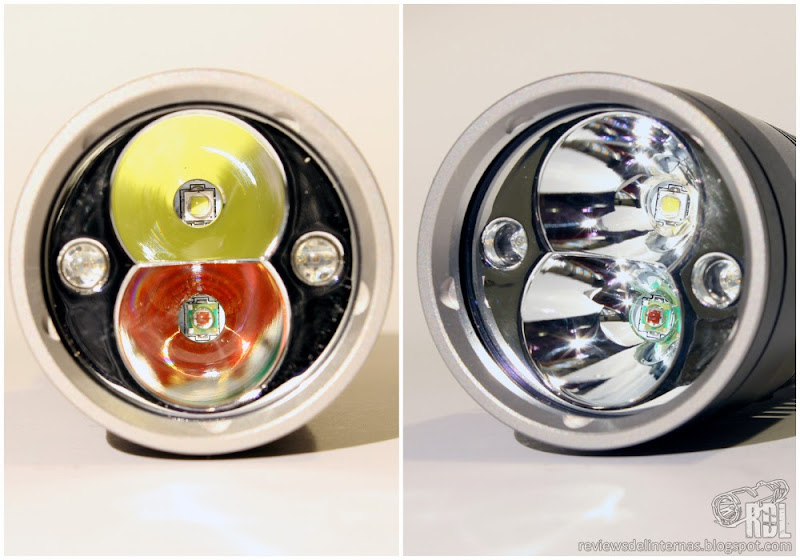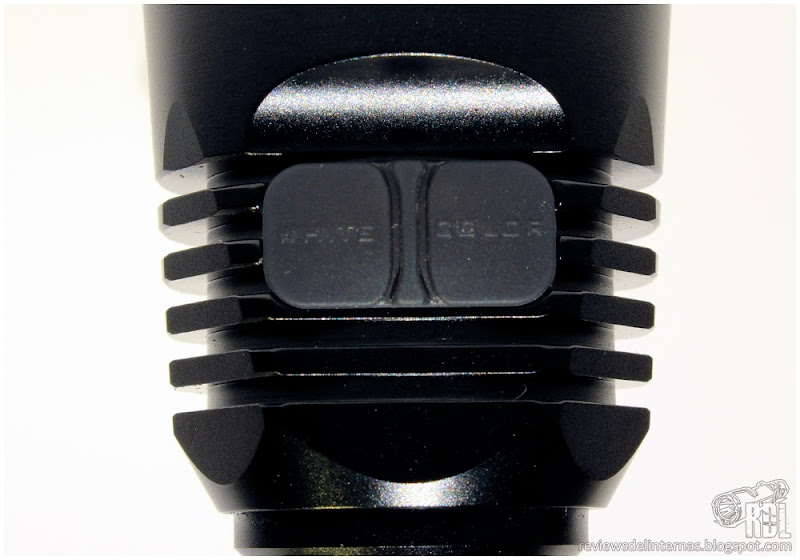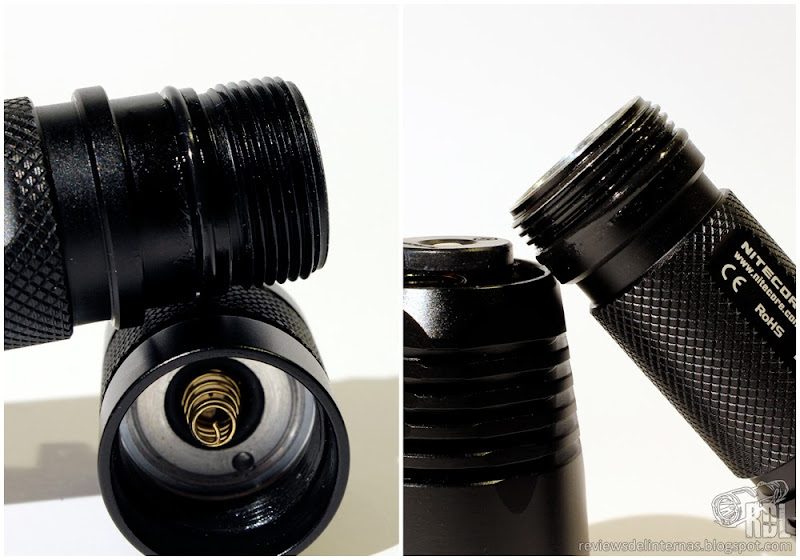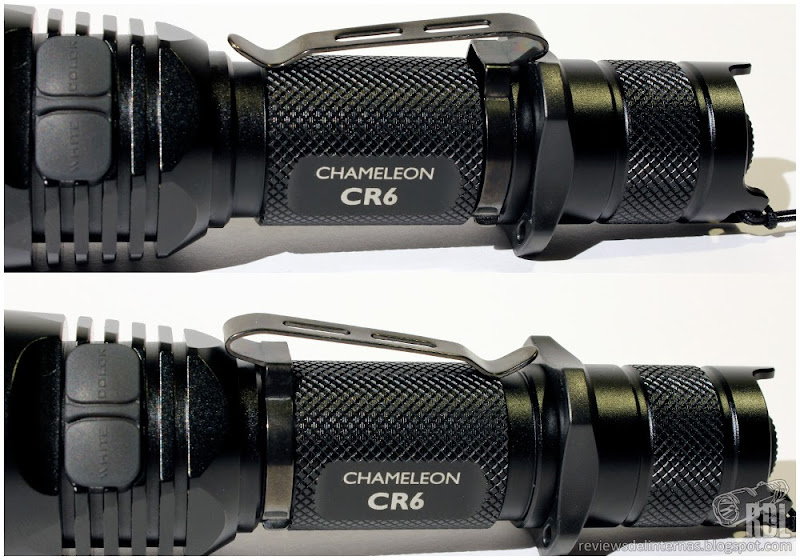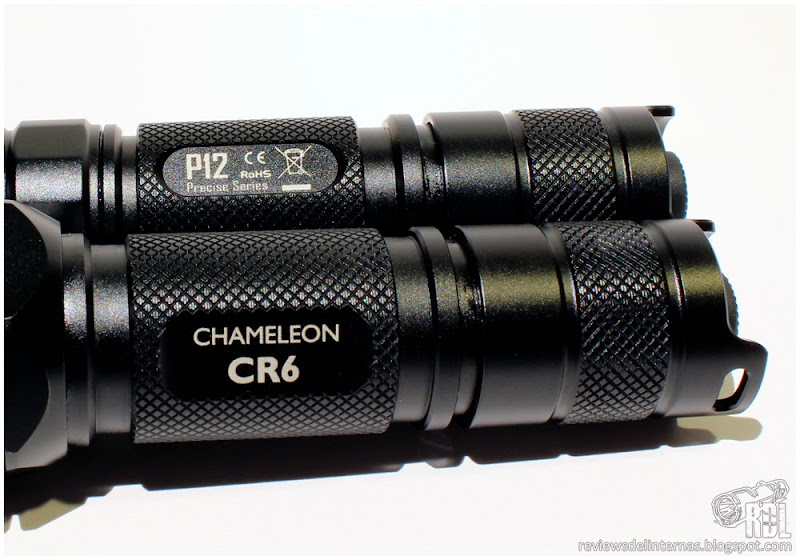
NITECORE CR6 Chameleon
LED: 1x XP-G2 R5, 1x RED XP-E R2, 2x 5mm RGB LEDs
Battery: 1x 18650 / 2x ® CR123
Modes: 5 White Light Modes (+1 hidden Firefly mode), 3 Red Light modes, 3 RGB axillary LEDs modes, 3 White Stroboscopic hidden modes, 1 Multicolor hidden strobe.
Switch: Triple (Double electronic switch at the head, Forward mechanical switch at the tail)
Date: February 2014
Links:
Flashaholics.co.uk / Nitecore / RdL / ForoLinternas Thread
INTRODUCTION:
The chameleon is a reptile that has the amazing ability to change the body color depending on the circumstances. Nitecore launches this new range, nicknamed with this interesting animal, Chameleon, designed to provide quality alternatives for those looking for a flashlight capable of offering a wide range of lighting in different colors. The range consists of a total of 5 flashlights, all sharing the same design and differing only in the primary LED for color.
Thus all Chameleon range share one of the two main LEDs , an XP-G2 R5CW and differ in the main LED dedicated to color, in CR6 for red light ( XP -E R2 , Max . 120LM ) CG6 for green light ( XP -E G2 , Max. 185LM ) and CB6 for blue light ( XP -E D4 , Max. 35LM ) . There are also two other models, equipping primary LEDs outside the visible spectrum, which are the CU6 with an ultraviolet LED and the CI6 for infrared light.
Overall, the packaging is consistent with previous presentations of the brand, with a printed cardboard box in which the black and yellow predominate as brand signature. Nitecore has distinguished the different models in the range, using a different design in each print. As always, the box on its exterior detailing has some interesting specifications and what we find inside is what the brand has accustomed us: Besides the flashlight, a textile holster for flashlight with Velcro opening, a paracord wrist strap, optional pocket clip, optional tactical ring grip, a set of spare o- rings and tailcap rubber switch cover, and an instruction manual accompanied by the Sysmax warranty card.
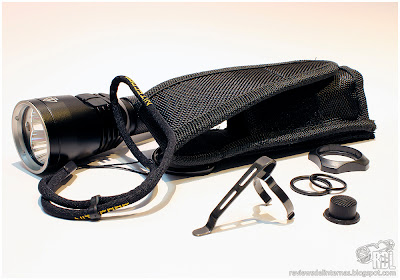
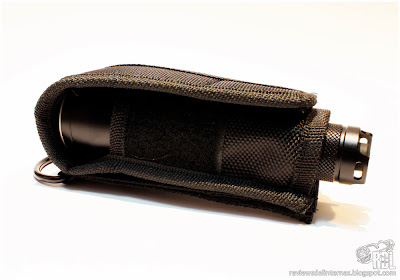
EXTERIOR FINISH:
The fit of the flashlight is quite similar in spirit to the SRT7 with a construction reminiscent of this, obviously lacking the magnetic control ring and incorporating among other features a quite different reflector.
Anodizing is matte black uniform and top quality once again in a new Nitecore, with precise and flaw-free machining. Texts and logos laser engraving are very well defined and clearly visible.
Starting with the flashlight head, with a considerable size, we find the interesting flashlight optics. This sophisticated CR6 includes a total of 4 LED emitters , two primary (XP-G2 and XP -E for white and red primary lighting) working separately , and two 5mm RGB LEDs that work together and are able to offer all three colors ( Red, Green and Blue) all from the same package.
The reflector consists of two separate collimators for the main LEDs, identical in diameter and depth and 5 mm LEDs are mounted directly on a hole at the flat unused surface of the reflector. An AR coated lens and sandblasted steel bezel, identical to that found in the EA4 or P25 optics top off the front. The outer shape of the head has a conical finish and is partly hex shaped over the dissipating fins.
Between the cooling fins we found the double electronic switch for control modes and colors, coated with a silicone which clearly differentiate the two buttons to the touch thanks to a space separator that stands right in the center of these. There are two embossed, and WHITE COLOUR which gives us an idea of what each button works for. This switch has backlit, working as low voltage warning indicator, but loses the ability to read battery voltage as recently seen in the Nitecore P12. Inside the neck we found a floating disc for mechanical protection against the installation of reversed polarity batteries, so the batteries we need to use in the Chameleon range should be button-top.
The central tube has a generous wall thickness, anodized threads at both ends, and also a generous amount of lubricant both threads as well as at the installed o-rings.
The knurling is quite smooth and oversized, so it does not offer a substantial improvement in the grip of the light, though the grip is quite good overall thanks to the shape and accessories.
The clip can be installed in both directions, thanks to the two tracks machined for that purpose in the tube.
The tailcap design is identical to that found in multiple Nitecore flashlights , including P25 , P12 , MT40 , MT2C , MH2C , MH40 , MT25 , MT26 … such that the remote switch RSW1 is compatible with all these flashlights .
In general, the construction of this CR6 is within the Nitecore brand standard pattern with an excellent finish.
USER INTERFACE:
Time to check the main attraction of this flashlight, which I’ve read is identical to the rest of the Chameleon series, and offers a wide range as far as colors and modes are concerned:
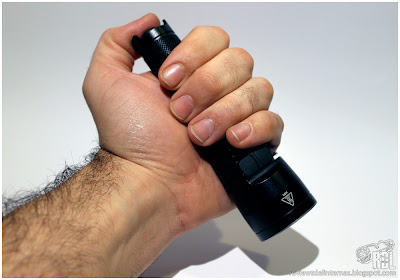
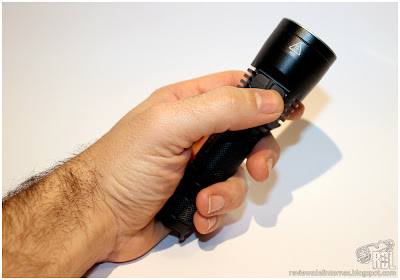
- Activation and momentary on: The flashlight, as I mentioned earlier, has a forward switch on the tailcap, through which flashlight has momentarily activation (pressing without actually click the flashlight will stay on while we keep the pressure on the switch) or permanently (until you hear the click by pressing and releasing).
- Changing modes (White light): With the flashlight on (even in a momentary), press the left button of the head (with the WHITE relief) to toggle between the 5 modes of primary white light, in ascending: Lower - > Low - > Mid - > High -> Turbo.
- Changing Modes (Red Light / RGB) : With the flashlight on (even in a momentary on) , we press the right button of the head (with the COLOUR relief) to toggle between the 3 red main modes, followed by the three colors from the two auxiliary RGB LEDs in the following order : Low - > Mid - > High -> Red auxiliary -> Green auxiliary -> Blue auxiliary .
- Memory: The light remembers the mode in which the turned off and return to this in the next activation, regardless of color. Thus, we can memorize two intensities and access them with just pressing the appropriate button on the head after activation. (For example, we can keep in memory Turbo mode for XP -G2 and Low mode for XP -E).
- Shortcut to Turbo (White Light): With the flashlight off, we press the left WHITE button and tailcap switch simultaneously and the flashlight turns on directly in Turbo mode.
- Access to special modes of white light: The CR6 has four special modes, hidden strobe modes from the main sequence and that do not interfere with daily flashlight usage. To access these special modes, with the light on, press and hold the left electronic button (WHITE) a couple of seconds to enter strobe mode. Repeating we go to Beacon, a flashing / locator mode which emits a flash about every two seconds, and repeat again the operation to access the SOS mode (which employs just over 10 seconds to complete the sequence). We can return to the main modes (either white or color) with simple clicking the suitable head switch.
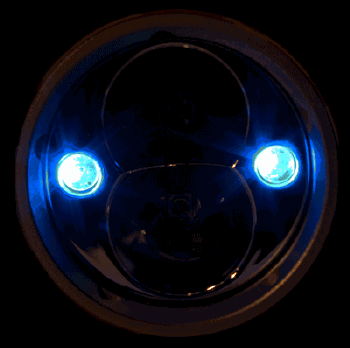
- Color Strobe Mode: If we make the above operation on the right button, the flashlight will enter a police strobe mode, alternating several bursts of red and blue light from the auxiliary LEDs. :exmark: Watch out with this function on public roads, as it may be illegal.
- Special strobe mode memory: Something that struck me positively in the previous review of the Nitecore P12 was the ability to memorize strobe mode. The CR6 (and therefore the full range) is also able to reproduce this behavior, offering a purely tactical function. Turning the flashlight off from any particular white light mode (Strobe, Beacon and SOS), next activation (momentary or steady) will be in strobe.
- Hidden firefly mode: Although it is not documented in the manual, there is a sixth white light hidden mode, a firefly sub-lumen mode. To access this, we have to turn on the flashlight pressing the COLOUR button and the tailcap switch simultaneously. The flashlight will activate in the color mode memory stored as would normally, but if we press the WHITE button will access this sub - lumen mode. This mode can also be memorized.
- Mechanical block-out: With its anodized threads, the Nitecore CR6 can be blocked by partially unscrewing any of its threads. This will avoid an accidental or inadvertent activation. By having a mechanical switch, there is logically no parasitic battery drain when the flashlight is off.
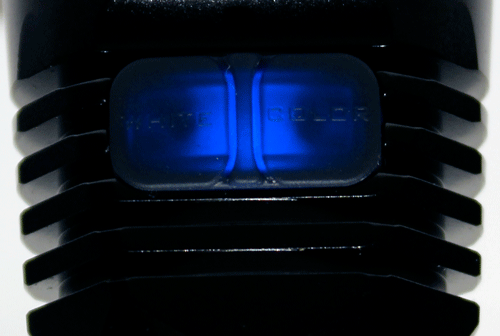
- Low voltage warning signals: Under the cover of the electronic switch of the head found a blue LED, which flashes once every two seconds when the battery is 50 % charged, and quickly when the battery needs to be replaced.

<span class=““here.”:[DIY] Esfera integradora con función datalogger - ForoLinternas - Foro sobre linternas y tecnología LED details More point. activation after seconds 120 and 30 between of reading value highest a using procedure FL1”:Estándares ANSI NEMA FL1 - ForoLinternas - Foro sobre linternas y tecnología LED NEMA “ANSI the following taken are measurements All”>

As usual, I get fairly consistent values against the specified by Nitecore for white light. For color modes, we have some notable differences especially in the High to the main red LED. Have to say I do not know if the wavelength of the color affects the integrating sphere reading sensor, since this was not designed to measure light color. Leaving aside this discrepancy, the other two modes of red light appear quite consistent with the specifications. I’ve also measured the LM captured by the sphere for different colors of the RGB LEDs, but again take up these values , as you English speakers would say “with a grain of salt ”.
PERFORMANCE:
The XP-G2 curve at its maximum mode shows good efficiency with excellent light output:

A fairly flat regulation without stepdowns for a powerful mode of ~ 450LM for over an hour, where it begins the gradual decline, thereby maximizing the time with useful light.
The High mode for the primary red LED shows an equally flat regulation with an extended runtime compared with its white neighbor.

Overall, the CR6 shows good efficiency at maximum two primary LEDs modes, with a good compromise between linear power and runtime.


BEAM PROFILE:
Due the twin reflector design for independent LEDs, it is expected that the beam is not so round and sharper than other flashlights with one reflector and LED can offer.
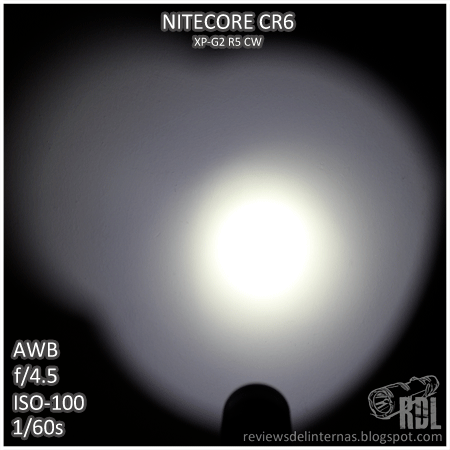
The XP -G2 R5 cool white tint seems really good, greenish or bluish halos free. The smooth reflector creates a polyvalent beam, with a well-defined hotspot so expect decent throw for the real and practicable dimensions of the reflector (190m according Nitecore specs). By independent twin reflector design, the profile shows an “extra” illuminated area, resulting from the overlap of the two reflectors. This is because of the light emitted by the XP-G2 is captured by the XP-E R2 reflector and bounced OTF. This effect is visible at short distances, but once out in the real world is not easy to notice.
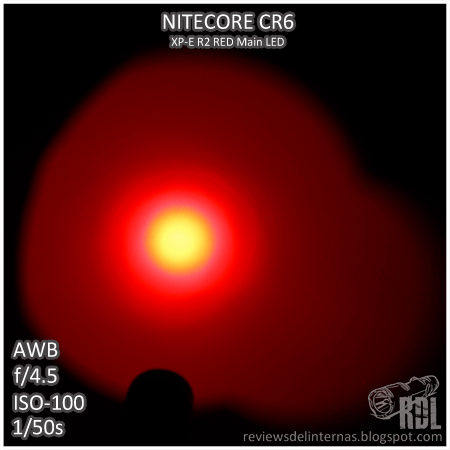
The same happens to the profile for the red XP-E R2. The effect of the overlap is now on the opposite side of the projection (all pictures have been taken with the light stable so you may have a better idea of this phenomenon). The red tint is really red and intense, but the camera tends to pretty saturate the shots. Nitecore haven’t spec’ed wavelength for colors, but according to the specifications of CREE, manufacturer of the XP -E R2, has a minimum of 620 and a maximum of 625nm.
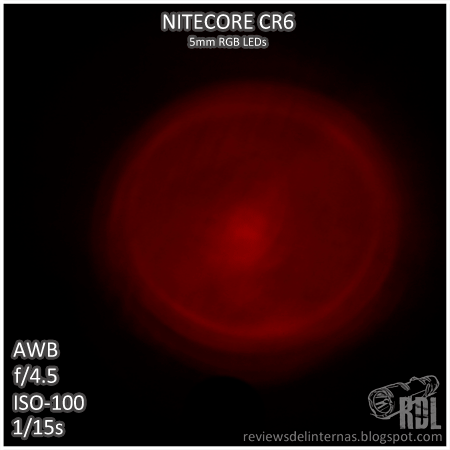
Finally , the two 5mm RGB LEDs offer , as expected in this kind of LEDs a much dimmer light than the CREE powerleds, and a beam profile in which the artifacts abound. I used a much slower speed to better capture the effect, so these shots are not comparable to the previous ones. Also, the flashlight is still in the same place among the three shots to better illustrate another unattractive effect of these LEDs, the difference in the light projection angle. This is caused by the position of each color segment within the LED die.
PERSONAL CONCLUSION:
The Chameleon range offers a real and serious alternative for those seeking a professional multicolor flashlight with an integrated conventional white light function and the proven quality of one of the world’s leading brands in the segment. The Red XP-E R2 offers excellent performance, now comparable with the qualities of any white light flashlight. Recall that in the recent past Nitecore has experimented with the colors in the SRT range, nothing to do with what now the Chameleon range offers in color performance.
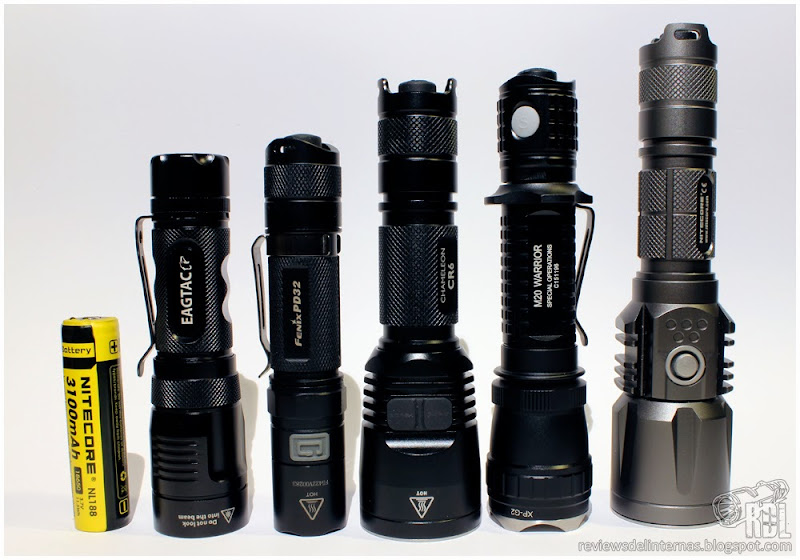
18650 • EagleTac TX25C2 •Fenix PD32 G2 • Nitecore CR6 •Olight M20 Warrior • Nitecore P25
Negatives: In general, it is difficult to find notable negatives from a subjective point of view. The overlap of the beam profile is something that can use the flashlight feels tricky the first time because it can be somewhat annoying to the “trained” eye of those who spend hours playing with flashlights, but once outdoor you’ll forget it fast. I miss the versatile voltage reading seen recently in the Nitecore P12 and other flashlights of the brand, with which it shares the low voltage warning on the backlit button. The poor performance and beam profile of the 5mm RGB LEDs is somewhat predictable, by the qualities of these kinds of LEDs. It is also somewhat annoying having to go through the three colors of the auxiliary LEDs every time we cycle the XP-E Red light from High to Low.
Positives: Starting with the production quality of Nitecore, able to provide a unique and distinctive look to their machining and finishing, this CR6 is a new example of knowing and good work. Not only deploy an extra LED, but they have also provided it with three modes, regulated, with an excellent efficiency in both main LEDs in the line of any other flashlight of this brand brand. I like this new trend of enabling a “special” memory for the strobe, which gives a basic function flashlight for tactical use, without being annoying in common usage. I think it’s smart to have used the same tailcap design in multiple flashlights, simplifying the search on the remote and maximizing compatibility. In general, the Chameleon range has seemed an excellent idea that, thanks to the available range of three colors plus ultraviolet and infrared version, anyone who has a specific need may have two flashlights in one, with the guarantee of a quality tool.


